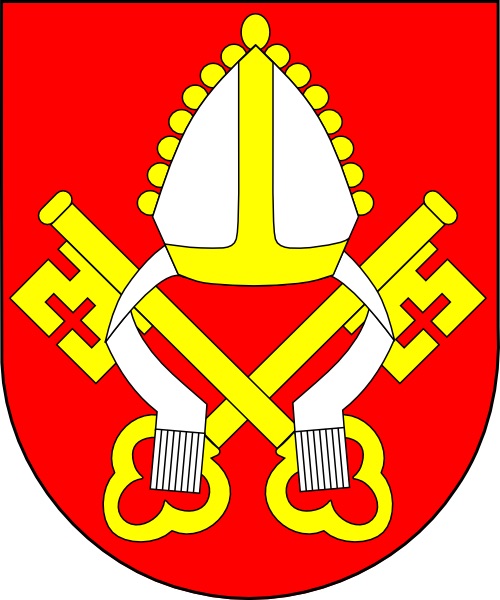
The Archdiocese of New York at 175: The Controversial Young Bishop
By: The Good Newsroom
John Hughes was only 41 years old and had been a priest for only 11 years when he was made a bishop

On July 19, 1850, Pope Pius IX established the Archdiocese of New York, a significant development in the city and the area’s Catholic history. The archdiocese’s first archbishop was the colorful and controversial John Hughes.
In 2000, the late historian Monsignor Thomas J. Shelley commemorated the 150th anniversary of the archdiocese for Catholic New York, highlighting the times, New York City’s immigrant population, and the first Archbishop of New York who made it the most important archdiocese in the country. The Good Newsroom is pleased to celebrate the 175th anniversary of the archdiocese by serializing that history throughout the week of July 14-18. The text has been updated slightly to reflect the passage of time.
John Hughes was only 41 years old and had been a priest for only 11 years when he was made a bishop. Within six years, he gained national fame due to three well-publicized battles he fought in New York. The first battle was an internal church matter over lay trusteeism, the system which gave elected lay trustees considerable authority in the administration of parishes. The system was not as democratic as it seemed because the trustees were not elected by all the parishioners, but only by the wealthier pewholders. In some dioceses, the system worked well, but in New York, it did not, not even in the cathedral parish. There, the unpopular French-born bishop, John Dubois, was often at loggerheads with the Irish-born trustees. The situation came to a head when the trustees summoned the police to remove a Sunday school teacher hired by Dubois. At that point, Hughes decided to act.
The young bishop called a public meeting to test whether the action of the trustees really represented the wishes of the parishioners. More than 600 people showed up at the meeting on February 24, 1839. Hughes was not only a born fighter but also a born orator, who knew how to sway a crowd, especially a crowd of fellow Irishmen. Hughes accused the trustees of treating old Bishop Dubois in the same condescending way the British had treated the Catholic clergy in Ireland. Hughes pulled out all the stops. He warned them that the “sainted spirits” of their forebears would “disavow and disown them, if…they allowed pygmies among themselves to filch away rights of the Church which their glorious ancestors would not yield but with their lives to the persecuting giant of the British Empire.”
It was sheer demagoguery, but it worked. Hughes said that, by the time he had finished speaking, many in the audience were weeping like children. And he added that (after listening to his own oratory), “I was not far from it myself.” Hughes’ performance on that occasion was the beginning of the end of lay trusteeism in New York. “It is a revolution,” he said, “and, I trust, a happy one in its consequences for religion.”
John Hughes walked into an even bigger battle in June 1840 when he took on the Public School Society, a private organization, funded by the state, which ran all of the city’s public schools. Catholics complained that the schools had become nondenominational Protestant schools where their religion was mocked and vilified. At the suggestion of Governor William Seward, the Catholics of New York asked for a share of state funds for their own schools. Hughes took up the cudgels on their behalf and waged a battle with the Public School Society that lasted almost two years.
Hughes expected opposition from the heavily Protestant Whig Party, but he was angry when the Democrats, who depended on the immigrants’ votes, failed to give him support. In retaliation, he engineered the formation of an ad hoc Catholic political party to teach the Democrats a lesson. In the state elections of 1841, the Catholic party got only 2,200 votes, but the Democrats lost New York City by a mere 290 votes. Hughes won the battle, but he lost the war. In April 1842, the state Legislature abolished the Public School Society in favor of elected school boards, but it also forbade all religious instruction in the public schools, an outcome that Hughes neither intended nor desired. As a consequence, he decided to build his own Catholic school system.
“The time has almost come,” he said in 1850, “when we shall have to build the schoolhouse first and the church afterward.”
Hot on the heels of the school controversy came Hughes’ third battle, which showed him at his feisty best or worst, depending on one’s point of view. In May 1844, anti-Catholic Nativist rioters in Philadelphia burned down two Catholic churches in several days of violence that cost a dozen lives. The Nativist leaders then announced their intention of coming to New York City to stage a large public demonstration that almost certainly would have precipitated anti-Catholic riots. Bishop Hughes placed armed guards around his churches and warned the mayor that “if a single Catholic church were burned in New York, the city would become a second Moscow.” John Hughes’ tough talk paid off. Under pressure from him and other civic leaders, the Nativists canceled their rally.
Writing anonymously afterward in the diocesan newspaper, Hughes gloated with satisfaction. “There is not a [Catholic] church in the city,” he wrote, “which was not protected with an average force of one to two thousand men–cool, collected, armed to the teeth–and with a firm determination, after taking as many lives as they could in defense of their property, to give up, if necessary, their own lives for the same cause.” Hughes’ statement did not exactly breathe the spirit of the Sermon on the Mount, and he wildly exaggerated the number of guards he placed around his churches. Nonetheless, it was his very belligerence that preserved the peace. Ray Allen Billington, the pre-eminent historian of American Nativism, gave the embattled bishop high marks for his tactics and credited him with “saving New York from a period of mob rule such as that which had racked Philadelphia.”

